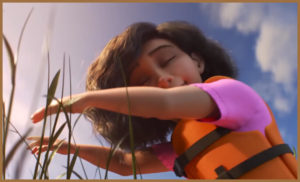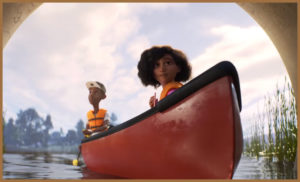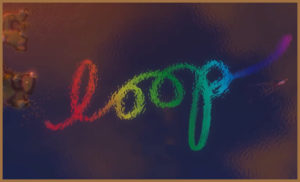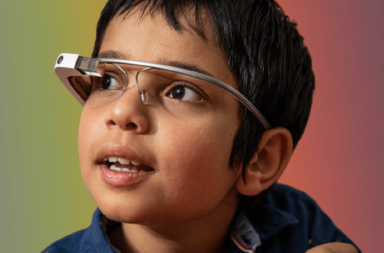Disney has a diversity problem. Sure, the pioneers of early animation have created timeless tales for all the family but, when it comes to representation, Disney’s characters aren’t quite so decade-defining as it’s stories and morals.
This can be seen in the carbon-copy princesses which helmed most of the mouse house’s early days (not to mention the minstrel-esque blackbirds of Dumbo). However, when it came to neurodiversity in Disney films, our community wasn’t just dealt a bad hand, but dealt no hand at all.
This all changed on January 10th 2020, when Pixar released Loop: a short film in which a canoeing expedition is complicated when a feisty young boy is partnered with the non-verbal, autistic, African-American: Renee (who is played by a non-verbal autistic voice-actor). But what is it that makes Loop the gamechanger it is and what does this mean for the future of diversity in Disney?

What Makes Loop Brilliant
From a muted yet vibrant colour palette, to a calm but not understated soundtrack, Loop‘s design is one made with beauty and care throughout. However, Loop doesn’t achieve this level of luxury by reinventing the wheel. Instead, Loop revolutionises representation by shifting angles and creating interesting points of view, giving audiences the full autism experience from the very first shot.
This attention to detail can be seen throughout the short film; being used to great effect when depicting how autistic people see the same as everyone – only our gaze is often hyper-focused (as demonstrated by a blurring of the screen edges which indicates where the lead autist’s attention is).
Personally, I love this little flourish, as it’s oh so similar to my own way of looking at things – a way which often causes people to question why I can spot things no one else does, yet struggle to see the full picture.
Nevertheless, to say Loop is beautiful because of its aesthetics only would do the film a massive disservice as, if you look beyond the gorgeous visuals and alternative perspectives, it’s not long before you get lost in something equally as stunning: its themes and messages.
In particular, Loop is a statement on how, whether you are on or off the spectrum, communication can often become disrupted when we let language stand in our way and, without ruining anything, it’s incredible to see how this message pays off (especially in the scene after the credits).

Is Loop The Most Diverse Animation Ever?
Surprisingly, this isn’t Disney’s first foray into autism depiction. As, while Loop is an autistic-centric film used to discuss themes of communication, a similarly short animated film: Float (released only a few months ago) told the tale of a father struggling with his son’s ability to fly; drawing parallels between its creator’s relationship with his own autistic child.
Without going off on too much of a tangent, I wanted to bring this up because, while the two films are almost paradoxical in their use of autism: with Loop using its autism to explore its themes and Float using its plot to explore autism, together they demonstrate how there are still so many more routes left to venture when it comes to portraying diversity in cinema.
This is an important lesson for anyone looking to do representation right, as too many make the mistake of using autism as a tool for telling a story when, really, autism is a story to be told (and, if you ask me, our perspective can offer refreshing new stories to those sick of seeing the same old princess saved from the same old castle).
As such, although Loop is worth watching for its awesome story and outstanding visuals, it’s worth praising for its spotless depiction which catapults us into a new era of autism animation. Of course, that’s not to say that Disney has redeemed itself from the no brakes offence of Lady and The Tramp’s Siamese Cats but, progress is progress, and I for one can’t wait to see where we go next.
[Loop is currently availble to watch on Disney+]

Carry on the Conversation:
Have you seen Loop? Then let me know your thoughts and feelings on the short film, using the comments section below. And, if you would like to see what exciting new autism properties are still to come in 2020, then check out my list of 7 Incoming Autism TV Shows for Late 2019/2020.
As always, I can also be found on Twitter @AutismRevised and via my email: AutisticandUnapologetic@gmail.com.
If you like what you have seen on the site today, then show your support by liking the Autistic & Unapologetic Facebook page. Also, don’t forget to sign up to the Autistic & Unapologetic newsletter (found on the sidebar on laptops and underneath if you are reading this via mobile) where I share weekly updates as well as a fascinating fact I have found throughout the week.
Thank you for reading and I will see you next Saturday for more thoughts from across the spectrum.


